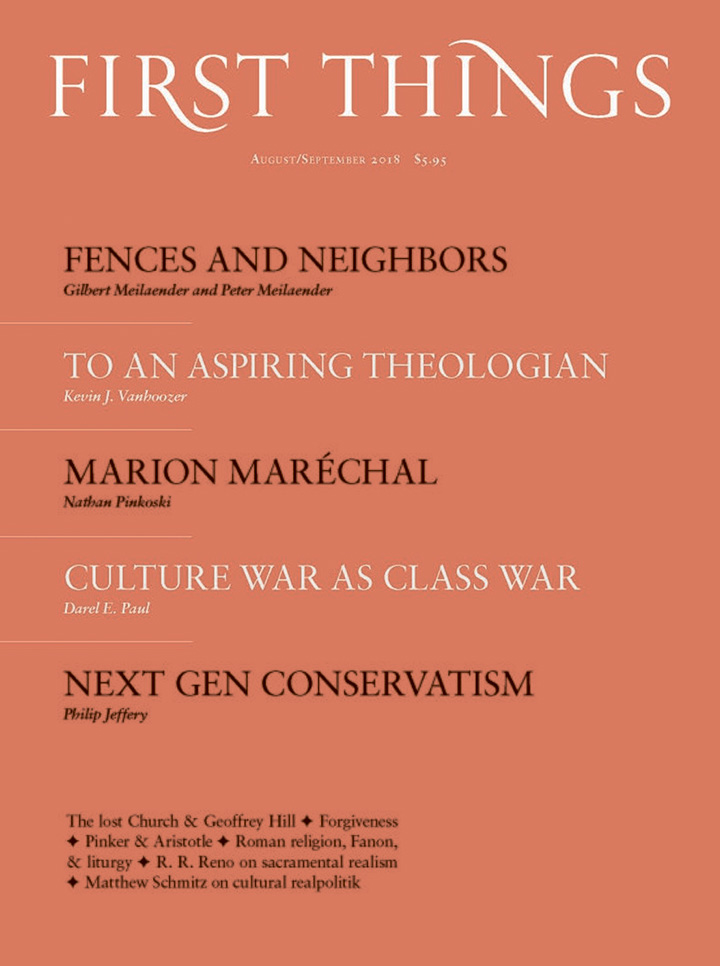The Cleansing of the Heart:
The Sacraments as Instrumental Causes in the Thomistic Tradition
by reginald lynch, o.p.
catholic university of america, 260 pages, $65
The sacraments are fundamental to any ecclesiology in which they play an part, and their number, their definition, and their role in salvation weren widely disputed during the Reformation. Nowadays, though, the averagen congregational understanding of the mode through which the sacramentsn function seems incomplete, apart from the fact that they do function. Isn grace contained in them like liquid in a vial? Or is it somethingn completely extrinsic to them, like money due by a promissory note?n
n In this clearly written and well-informed study, Fr. Reginald Lynch, O.P.,n provides an excellent exploration of different theories of sacramentaln efficacy as divine instrumentality, especially the theory of Thomasn Aquinas. He contrasts the developed instrumental theory of Aquinas with then “moral causality” of Melchior Cano and others. In the process, he touchesn on the academic opposition between Aristotelian demonstration inn scholasticism and Cano’s humanist tendency toward rhetorical theology, withn their effects on the understanding of the sacraments. The work succeedsn both as an introduction to the study of sacramental efficacy, and as an solid study of Aquinas and Cano. Eminently satisfying.n
n n —Thomas Sundaram is a judge in the Metropolitan Tribunal of then Archdiocese of Galveston-Houston.n
n Women Against Abortion:
Inside the Largest Moral Reform Movement of the Twentieth Century
by karissa haugeberg
university of illinois press, 240 pages, $24.95
n Women Against Abortionn could have been an important book—a historical and sociological examinationn of the motivations and contributions of the women striving to bring an endn to legalized abortion. Instead, Karissa Haugeberg (assistant professor ofn history at Tulane University), burdened by undisguised support for an “woman’s right to choose,” provides a biased treatment of this issue. Hern ideology limits her: The book focuses on only four women—Shelley Shannon,n Marjory Mecklenburg, Juli Loesch Wiley, and Joan Andrews Bell—most of whomn have not been active in the pro-life cause for decades and one whosen singular “contribution” was the shooting of abortionist George Tiller.
n The volume’s value lies in its biographical data about female anti-abortionn activists. But Haugeberg errs when it comes to interpreting this data,n manipulating the biographies to fit her preconceived perspective. Hern thesis is essentially this: These four women may have started out with an certain ingenuity and even “feminist” independence, but they becamen overwhelmed. Eventually, their leadership was eclipsed by patriarchaln Evangelical Protestant males who swelled the ranks of the activist movementn in the 1980s and early 1990s. Shannon shot Tiller, but Mecklenburg wasn co-opted by conservative Republican politics, and the last two, Wiley andn Bell, retreated into marriage and motherhood, utterly acquiescing to then patriarchy.n
n Haugeberg’s narrative often sounds like a Planned Parenthood fundraisingn memo. Women against abortion (whom she consistently describes asn “terrorists”) “invade” clinics, harass patients and staff, set up bogusn medical centers, lie to women, steal fetuses, and display fake abortedn fetus photos. Although this book was intended as a work of scholarship, itn ends up being merely a diatribe against pro-lifers and a lament that somen women continue to oppose abortion.n
n n —Monica Miller is associate professor of religious studies at Madonnan University.n
n The Indissolubility of Marriage and the Council of Trent
by e. christian brugger
catholic university of america, 312 pages, $69.95
In The Indissolubility of Marriage and the Council of Trent, E.n Christian Brugger, professor of moral theology at St. John Vianneyn Theological Seminary, gives a focused and exhaustive account of then sixteenth-century Church’s treatise on matrimony and its implications forn theologians today. The book is an intervention in contemporary debatesn surrounding Trent’s doctrine of the indissolubility of marriage and then possibility of a pastoral reconsideration of what some deem merely a mattern of church discipline (and thus a revisable teaching) rather than ann irreformable dogma of the faith.
n The essential question is the formulation of canon 7 on matrimony, whichn differs from most of the other canons in its “indirect” phrasing. Unliken earlier drafts of the canon, with the common formula “If anyone says, thatn on account of the adultery of one of the spouses a marriage can ben dissolved . . . let him be anathema,” the published canon reads: “If anyonen says the church errs, when she has taught and teaches,” etc. Many scholarsn take this phrase to indicate that the council fathers did not intend ton solemnly define the doctrine of indissolubility.n
n But Brugger argues that this “softened” phrasing in no way compromises then dogmatic content of the canon, in the mind of the council fathers or inn fact. The formula was revised, he asserts, for political expediency. Then council hoped to avoid directly condemning the Eastern Church’s practice ofn allowing for remarriage while still targeting the reformers, who had, aftern all, “said that the Church errs.” Through a historical contextualizationn and narrative reconstruction of the drafting process, Brugger leaves littlen doubt about the meaning of canon 7, and little room for those who claim itn does not define Catholic dogma about the impossibility of dissolving an marriage.n
n —Christopher McCaffery writes from Washington, D.C.

